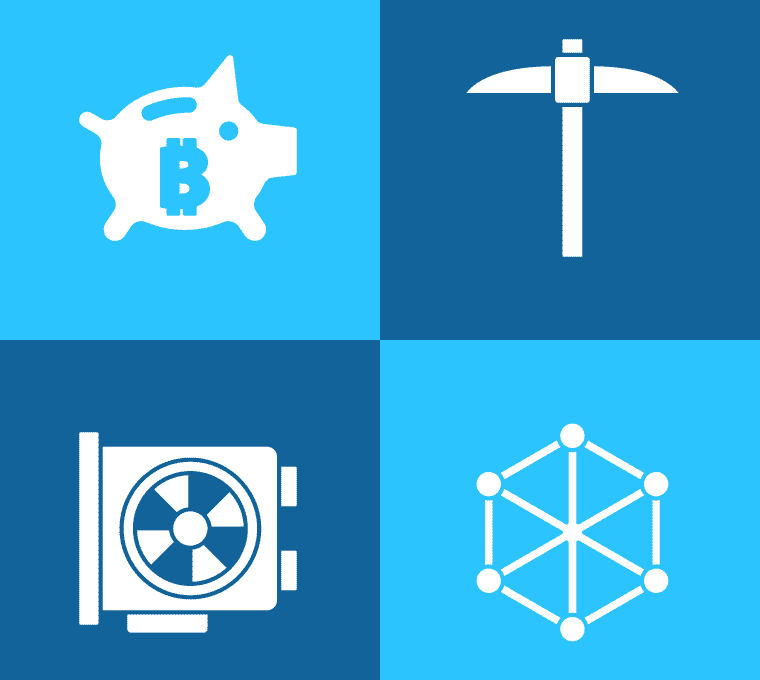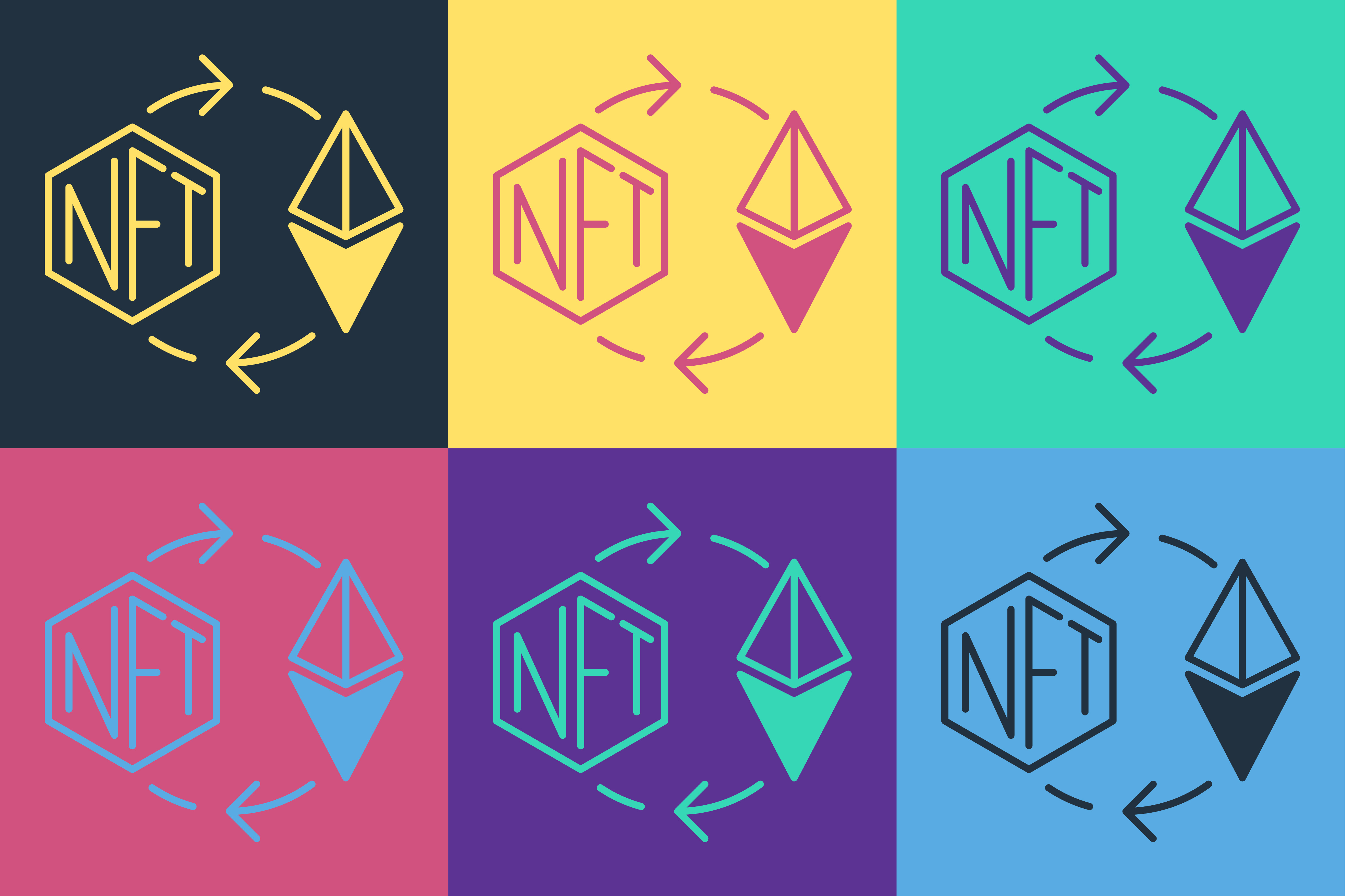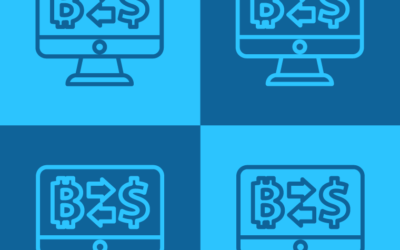What is Crypto Mining? Here’s How Cryptocurrency Mining Works [Explained In Plain English]
Are you asking yourself – what is crypto mining? Well, crypto mining is the backbone of many cryptocurrencies, including Bitcoin. In fact, all proof-of-work cryptocurrencies require miners to function.
Satoshi Nakamoto was the first to develop and implement crypto mining. He created crypto mining with two purposes in mind. First, as a way to verify transactions without a central authority (e.g. bank or government). And, second, as a way to incentivize people to participate in this verification process.
Ok, but what is crypto mining exactly and how does it work? Let’s take a look at these common questions.
Here’s what we’ll cover.
What is crypto mining?
How does crypto mining work?
What is a crypto miner?
Crypto mining rewards
Can anyone mine cryptocurrency?
Is crypto mining bad for the environment?

What is crypto mining?
If you’re wondering – what is crypto mining – you’re not alone! So, we’re here to break it down.
Crypto mining is a complex digital process that has two purposes:
- Verify transactions on the blockchain
- Create new coins/tokens
Proof of work blockchains use crypto mining as a way to validate new transactions. In other words, to make sure that all the transactions in a given block are legitimate.
Learn more about how the blockchain works here – Blockchain Basics
Crypto mining involves solving complex mathematical problems (known as hashing puzzles) with specialized hardware called mining rigs. The first miner to solve this mathematical problem receives new crypto tokens as a reward. More specifically, crypto miners are rewarded with the same type of crypto that they are mining.
Ok, now that you know what crypto mining is and why it’s important, let’s take a look at how it works.
How does crypto mining work?
As crypto transactions take place, transaction data is grouped into blocks. In the case of Bitcoin, a block fills up approximately every ten minutes. Each block can contain thousands of transactions. Before a block is added to the blockchain it must be verified. This helps prevent manipulation and fraudulent entries. This verification process is known as crypto mining.
Crypto mining requires miners to validate each block and add it to the blockchain. The first crypto miner to validate a block and add it to the blockchain receives a reward. This reward is in the form of new crypto coins/tokens.
To be the first to complete this task, a miner must solve a complex mathematical problem known as a hash function. To do this, crypto miners use mining rigs (high-powered computer equipment). These mining rigs solve the complex puzzle through trial and error.
What exactly is a crypto miner?
If you’ve made it this far in our guide to what is crypto mining, you’re probably wondering – what is a crypto miner? We’re here to tell you that the term ‘crypto miner’ is often confused.
Commonly, the term ‘crypto miner’ is used to describe the people that oversee crypto mining operations. However, a true crypto miner is the mining rig that does all of the hard work (i.e. the mining).
What is a mining rig?
A mining rig is a high-powered computer that solves puzzles in order to verify crypto transactions. Each time a mining rig correctly solves a puzzle before all the other competing rigs, it receives cryptocurrency tokens as a reward.
There are a few different types of mining rigs. Various rigs exist because different cryptocurrencies have different algorithms running in the background. The type of algorithm that a cryptocurrency uses determines the type of puzzle that a miner must solve. As a result, some mining rigs are better at mining certain cryptos than others.
The type of mining rig that a business uses will depend on the cryptocurrency they are mining. Some common types of mining rigs include:
1. CPU Miners
CPU stands for Central Processing Unit. A CPU is the brain of a computer. Therefore, anyone can use their desktop or laptop computer as a CPU miner.
That said, CPU mining is only suitable for cryptocurrencies with low hash rates. In other words, CPU mining is only profitable if there are not a lot of miners competing. For instance, although CPU miners could successfully mine Bitcoin when it was first introduced, they are no longer effective. This is due to increased competition and high hash rates. To successfully mine Bitcoin in this day and age, you’ll need the dedicated power of a GPU, ASIC, or FPGA miner.
Which cryptocurrencies can be mined using a CPU? Some of the most common cryptocurrencies that can be mined using CPU miners include:
- Monero (XMR)
- Dogecoin (DOGE)
- ZCash (ZEC)
- Ravencoin (RVN)
2. GPU Miners
GPU stands for Graphics Processing Unit. A GPU miner uses the graphics processing unit from a gaming computer to mine cryptocurrencies.
A GPU is faster and more powerful than a CPU. Therefore, GPU miners are more effective at mining competitive cryptocurrencies than CPU miners.
GPUs were originally designed to accelerate the processing and rendering of graphics on a computer. To do so, GPUs execute specific functions and process huge amounts of data all at once. These capabilities make them perfect for mining crypto. That said, more advanced technology (e.g. ASIC and FPGA miners) has now replaced GPU miners. Still, GPUs are better for residential miners, as they do not produce as much heat or noise as ASIC miners.
While GPU miners may no longer be effective for mining cryptocurrencies like Bitcoin, they can still be effective for certain tokens. For example, GPU miners can be used to mine:
- Ethereum Classic (ETC)
- Dogecoin (DOGE)
- ZCash (ZEC)
- Monero (XMR)
- Ravencoin (RVN), and more
3. ASIC Miners
ASIC stands for Application-Specific Integrated Circuit. An ASIC miner is a computerized device that uses an ASIC chip to mine cryptocurrency.
An application-specific integrated circuit is a special chip that can be optimized for a single purpose (i.e. to compute a single function or set of related functions). Therefore, a single ASIC miner can mine only one cryptocurrency. For example, if an ASIC miner is built to mine Bitcoin, it can mine only Bitcoin and no other token.
Today, ASIC miners can be used to mine Bitcoin. In fact, most profitable blockchain mines use ASIC miners. Why? Because these chips are extremely effective at mining the specific cryptocurrency they were designed to mine. The biggest drawback – ASIC miners produce a lot of noise and heat.
Unlike a CPU miner, ASIC miners can mine any cryptocurrency that uses proof of work. ASIC miners can also mine crypto faster and more efficiently than CPU and GPU miners.
4. FPGA Miners
FPGA stands for Field-Programmable Gate Array. An FPGA crypto miner is similar to a GPU miner in many ways. For instance, like a GPU miner, every FPGA miner is programmed to mine a particular cryptocurrency. The biggest difference between these two types of miners is that an FPGA miner is reprogrammable. In other words, while an ASIC miner can only ever be used to mine one type of cryptocurrency, an FPGA miner can be reprogrammed to mine different coins. However, it’s important to note that programming and configuring an FPGA requires special skills. Therefore, it is not something that the average Joe can do.
FPGA miners are faster and more energy-efficient than CPUs and GPUs. As a result, they are more profitable. However, due to this efficiency, FPGAs can be extremely expensive to purchase.
Although an FPGA miner is more advanced than an ASIC miner, an ASIC miner is more energy-efficient. So, crypto mines will often choose ASIC miners over FPGA miners. That said, FPGA miners are capable of mining coins that are ASIC-resistant. For example, Ethereum is considered ASIC-resistant. Therefore, miners may use FPGA miners to mine Ethereum.
Crypto Mining Rewards
Now that you know more about what is crypto mining and mining rigs, you might be asking yourself – why do people mine crypto? The answer to that question – for the monetary rewards, of course.
As we mentioned above, the first crypto miner to validate a block by solving a complex math problem receives a reward in the form of cryptocurrency. But how much are we talking?
In the case of Bitcoin, a Bitcoin miner receives 6.25 Bitcoin for every block it validates. So, for instance, if the price of 1 BTC = $30,000 USD, a Bitcoin miner receives $187,500 (6.25 BTC x $30,000) every time it validates a block.
Keep in mind that mining Bitcoin is extremely competitive. In fact, a single mining rig may only successfully validate a block once every few years. This is why most Bitcoin miners join mining pools or create mining farms that run many Bitcoin miners at once.
Learn more about mining pools here – COMING SOON.
Bitcoin mining rewards are also cut in half every time approximately 210,000 blocks are mined. This happens about every 4 years. This is known as the Bitcoin halving. The next Bitcoin halving will likely occur in May 2024. At this time, mining rewards will decrease to 3.125 BTC.
Can anyone mine cryptocurrency?
Anyone can mine cryptocurrency. This is one of the great things about crypto – anyone, young/old, rich/poor, can get involved with cryptocurrency in one way or another.
When it comes to mining, some cryptocurrencies are easier to mine than others. Since Bitcoin mining is so competitive, it would be very difficult for an average person to be successful. Today, a profitable Bitcoin mine would require a huge capital investment. In fact, most Bitcoin mines have warehouses full of Bitcoin miners! Therefore, most people don’t set their sights on Bitcoin mining – even experts who know what is crypto mining and how it works.
Keep in mind that it is possible for miners to team up to increase the likelihood of success when mining Bitcoin. They do this by forming a mining pool. In this mining pool, they combine their resources (i.e. computer power) to improve their chances of being the first to solve the hash problem.
Outside of Bitcoin, there are many opportunities for everyday people to mine crypto. Some of the best cryptocurrencies to mine at home include:
- Ethereum Classic (ETC)
- Peercoin (PPC)
- Bitcoin Cash (BCH)
- Monero (XMR)
- Dogecoin (DOGE)
- Litecoin (LTC)
- ZCash (ZEC)
Is crypto mining bad for the environment?
For many years, the media has highlighted how bad crypto mining is for the environment. This is because Bitcoin mining, in particular, requires huge amounts of energy to power the network of computers that manage the Bitcoin blockchain. In fact, you may have heard that in just one year Bitcoin miners uses more electricity than the country of Finland.
Unfortunately, what the media often fails to acknowledge is how crypto mining compares to our current financial system. As well, reports don’t often discuss the sources (current and possible) of all this power.
Consider this – our current financial system uses the following:
- Metals mined from the Earth to create coins
- Materials like cotton and plastic for printing bills and cards
- Heavy machinery to mint coins and print bills
- Specially equipped, heavy-duty vehicles to transport physical money
- Dedicated bank buildings around the globe with computers, lighting, heat, water, etc.
- ATMs using power, and the list goes on
As you can see, our current financial system is no better when it comes to its impact on the Earth. In fact, Bitcoin mining may not be as nearly as bad for the environment as our current system – especially when you consider where most Bitcoin miners get their energy.
Most people believe that Bitcoin miners simply plug their mining rigs into the wall and drain energy from the power grid. However, Bitcoin miners have adopted many different ways of using alternative energy sources. In fact, some say that Bitcoin miners are helping to drive the clean-energy sector.
What kind of energy do Bitcoin miners use?
Now, you may know what is crypto mining but did you know that crypto miners can use various types of energy?
Some common alternative energy sources that Bitcoin miners use today include:
- Wind
- Hydroelectricity
- Solar power
- Nuclear power
In addition to these familiar energy sources, Bitcoin miners have been able to take advantage of a less-known source of energy – the waste methane at oil wells.
Not familiar with waste methane? Methane is a natural byproduct of oil extraction. Because many oil wells are located remotely, it is not economical to transport this methane to refineries. So, they burn (or flare) the gas instead. Unfortunately, this is not the most effective or eco-friendly process. In comes Bitcoin miners. Bitcoin mining companies can capture this natural gas and use it to power their mining operations. By using this methane, Bitcoin miners can reduce the greenhouse gases (methane and CO2) that would otherwise be released into the atmosphere.
Introducing the Crypto Mining Hybrid Energy Model
A new hybrid energy model has also been developed by Bitcoin miners. In this model, Bitcoin miners buy excess renewable energy when it is available and use the power grid when it’s not. Although this might not sound very beneficial off the top, further inspection reveals that this type of hybrid model could help drive the renewable energy sector.
How can crypto mining benefit the renewable energy sector? Well, renewable energy providers often produce excess energy that goes to waste. This negatively impacts the provider because they cannot consistently monetize their operation. Therefore, by buying excess energy when it is available, Bitcoin miners are helping to make renewable energy more affordable for everyone. As a result, renewable energy providers can consistently monetize their operations. This means that renewable energy can be made available at a lower cost.
As you can see, by creating an efficient digital monetary system using cryptocurrency, we can reduce our environmental impact. And, innovative crypto miners could help drive our transition to clean energy sources!
More Crypto Content You’ll Like
What is NFT vs Crypto: Understanding the Key Differences and Similarities
Wondering – what is NFT vs crypto? Unlock the secrets of these digital assets, explore their similarities and differences, and learn how they’re shaping the digital future.
Understanding Leverage Trading in Crypto: How to Amplify Your Gains (+Possible Risks)
Learn what leverage trading crypto is and how it works. Plus, the top exchanges for leverage trading crypto.
3 NFT Smart Contract Examples (Solidity, Vyper and Rust) + What Each Function Means
Explore 3 NFT smart contract examples (in Solidity, Vyper, and Rust) and learn what each function in the code does.



